Legacy tutorial posted on the old Alias Design Community site on August 15, 2008, by David Bentley.

FULL ALIAS INTERFACE
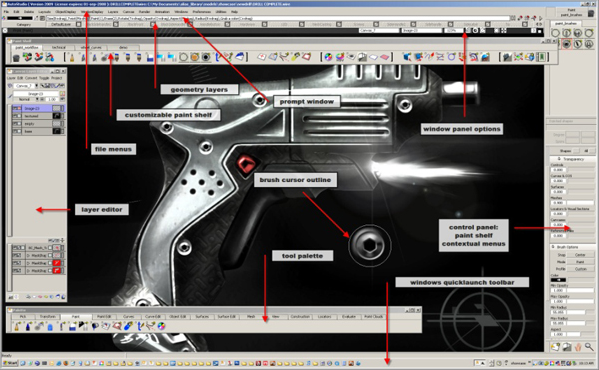
Definitions, tool names, menus, panels.
It's far too cluttered to paint with all these floating pallets using up valuable screen space.
CLEANED UP INTERFACE
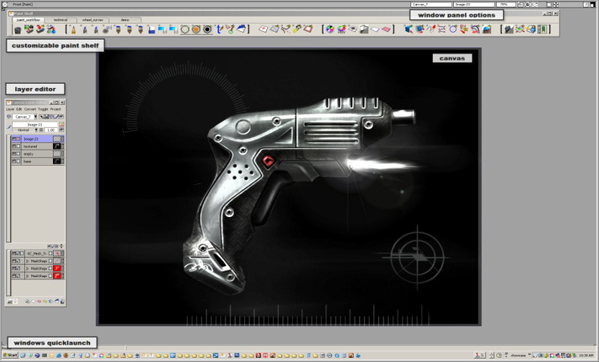
A customized paint shelf, the layer editor, and a few options in the window panel.
All menus or pallets can be toggled on and off with customizable hotkeys or marking menus.
2D WORKFLOW
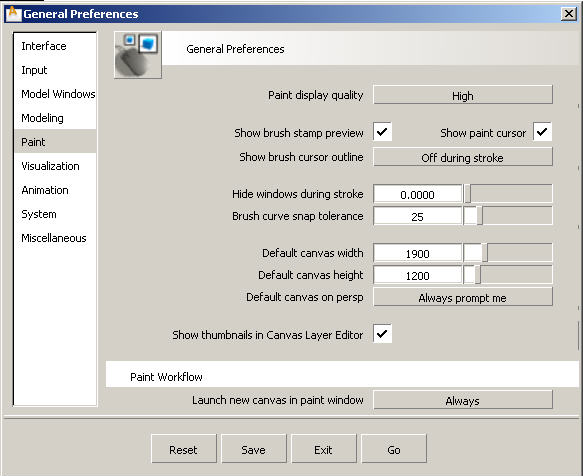
PAINT WACOM SETTINGS TO BE CUSTOMIZED
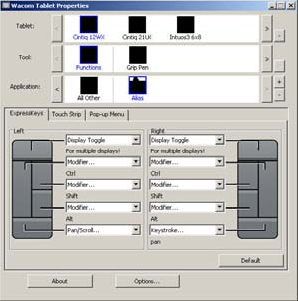
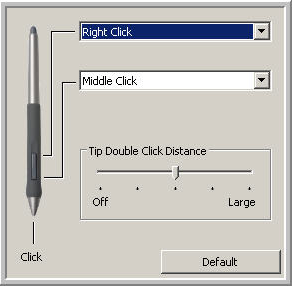
Start > Programs > Wacom Tablet > Wacom Tablet Properties.
PAINT SHELF

Place all the brushes and tools that you might use when sketching or painting. Drag icons from the pallet or menus using the middle mouse button to the shelf.
Make multiple tabs for different paint workflows. Even save out different shelves.
Drop down tools. Mmb drag and drop icons.
Hot Keys
Located under: File Menu > Preferences > Interface > Hotkeys/Menus.
All paint tools can be hot keyed. It is important to only hotkey the tools that will be used regularly and that will cut down on using the interface.
Key hotkeys to create:
- Color grabber (eye dropper)
- Full screen
- Toggle shelf
- Toggle layer editor
- Transform layer
- Invert mask
- Toggle symmetry
- Toggle edge/center curve snap
- Control panel toggle
Useful en-editable hotkeys:
- Hotbox (Navigation, brush options) - space bar
- Curve snap - ctrl+alt+brush stroke
- Marking menus - Ctrl+shift+mouse buttons
Full Screen
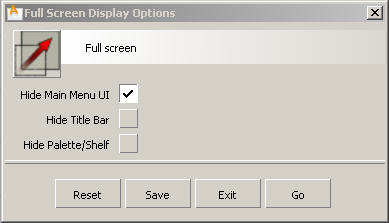
Located under: File Menu > Layouts > Full screen (option box).
Marking Menus

Located under File Menu > Preferences > Interface > Marking menus. Customizable. Mmb
Important Interface Items to Know About…
Control Panel
(File Menu > Windows > Control Panel)
Paint mode.
Hot swap different tool shelves (I have different brush shelves for different workflows) Information on picked shapes, curves, or surfaces.
Display (a way to easily toggle on and off the control vertices of curves)
Transparency (with a slider the transparency of curves, surfaces, poly meshes, canvases and reference files can be tuned)
Brush options (a basic editor for the current selected tool. This can be brushes or tools)
Auto shape (when creating curves auto-shape converts them into fills, strokes, or both automatically)
BRUSH EDITOR
(Double click any paintbrush)
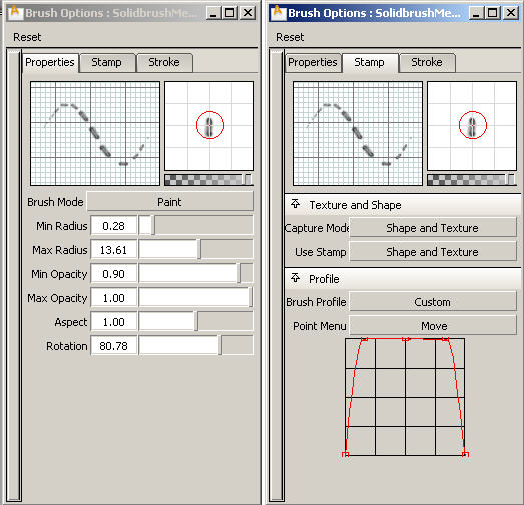
Simple brushes as well as complex texture brushes can be created and captured with-in the editor. Once a new brush has been added to your paint shelf...Re-save the shelf or you will lose the new brush when you exit.
SHAPE EDITOR
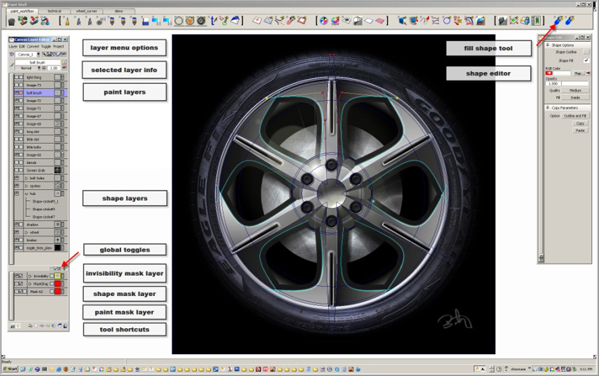
Shapes are like Illustrator drawings. They are curved based drawings that update when the curve is manipulated. They can be solid filled color, strokes along a curve, or ramps and texture fills and combinations of both.
CANVAS LAYER EDITOR
Menus (full of tools; merge, invert, etc...all can be hot keyed).
Active layer information (name, transparency and layer filters...i.e. multiply, blend).
2D paint layers (the active layer is blue. Paint layers can be of 2 types; painted or shapes (curve based). Associated masks show a chain icon in the box).
Mask layers (global masks. They can be painted or shapes (curve based)...stencils are another type of masking).
Shortcuts (icons for creating, duplicating, clearing and deleting layers).
HOT BOX (Spacebar)
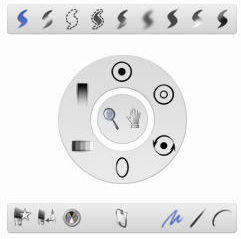
Zoom and pan navigation.
Brush controls to interactively change the size, aspect, rotation, and opacity of a brush. Brush modes (every brush can paint, erase, hide, show, etc...).
Quick keys to reset a brush, toggle between last brush used, color editor, rotate canvas, unconstrained brush strokes, constrained straight line strokes, constrained curves and circle strokes.